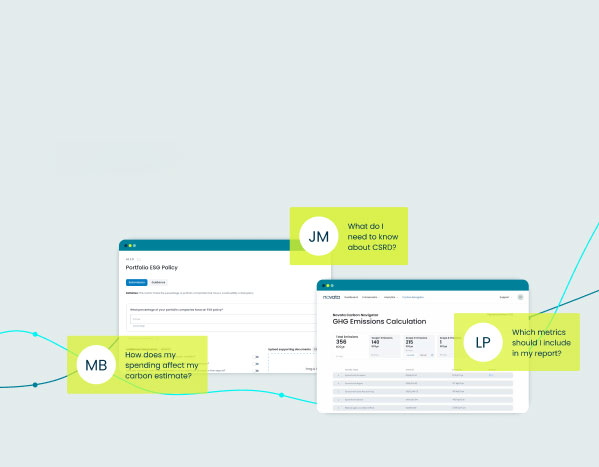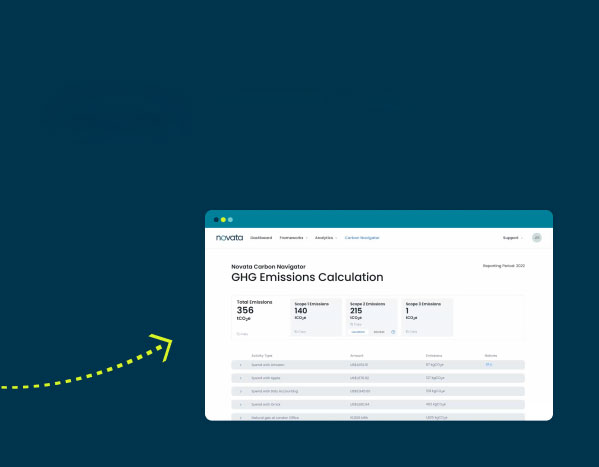The principal adverse impact (PAI) statement is a critical disclosure for firms subject to the Sustainable Finance Disclosure Regulation (SFDR). PAI indicators evaluate the effects of business activities on sustainability factors, including the environment, human rights, and anti-bribery and corruption matters. The annual statement provides qualitative and quantitative disclosures on these areas. However, the complex, technical nature of PAI calculations and the requirements for granular, often inaccessible sustainability data make it one of the most challenging and tricky aspects of SFDR reporting.
With fund managers already bracing for potential amendments to the SFDR, ensuring they are prepared to publish their next PAI statement by the June 30th deadline adds another layer of pressure to navigating the regulation. This checklist is designed to guide investors through the fundamentals of robust PAI reporting and help to establish processes that resonate with broader ESG objectives.
What Are PAIs?
PAI indicators measure the negative impacts of investment decisions on sustainability factors. The PAI statement utilizes a standardized template to track key metrics for each identified indicator to demonstrate to current and prospective investors how decisions may or may not impact key environmental and social topics. This aims to curtail greenwashing concerns and ensure that “sustainable” portfolios are delivering on their objectives.
Who Is Required to Publish a PAI Statement?
Under the SFDR, PAI disclosures are required from financial market participants (FMPs) and financial advisors (FAs) that market or intend to market their products in the EU. These entities include, but are not limited to, investment firms, insurance companies, and AIFM (Alternative Investment Fund Managers).
PAI disclosures are mandatory for firms with 500 employees or more, and smaller entities under this threshold must adhere to the “comply or explain” principle. Financial entities that consider PAIs in their investment decisions must explain how they do so (“comply”), while those that do not must describe why and whether they intend to consider them in the future (“explain”). However, they are encouraged to participate voluntarily to showcase transparency and due diligence in their sustainability efforts.
The PAI Statement is disclosed at the entity level (firm level), which includes the aggregation of data across all fund types (i.e., Articles 6, 8, and 9). At Novata, we find that firms with less than 500 employees are increasingly collecting PAI data regardless of their SFDR obligations due to stakeholder pressures and the desire to collect a standardized set of recognized EU metrics. Many collect PAI indicators for their internal reporting but do not always disclose them on their website. We’re also finding that many fund managers are collecting PAIs at the product level (fund level) rather than the entity (firm) level, as they find these data insights to be more useful. This trend is likely to grow as investors share insights on products rather than processes.
Deciphering PAI Disclosures
Principal adverse impacts should be disclosed at an entity and product level:
| ENTITY-LEVEL DISCLOSURES | PRODUCT-LEVEL DISCLOSURES |
|---|---|
Entities must demonstrate how they integrate “sustainability risks” that affect both their investment values and the broader community. This information has to be made readily available on their website, and must include:
| Product-level disclosures affect pre-contractual documentation (such as prospectuses and client information) and periodic disclosures. This obligation does not extend to financial advisors and only impacts FMPs. The SFDR requires:
|
What Data Should Firms Look At?
As PAI indicators focus on measuring the negative sustainability risks associated with an investment, preparing an accurate PAI statement provides firms with tangible ways to embed ESG considerations into their portfolios further. The Regulatory Technical Standards (RTS) detail what qualitative and quantitative inclusions are required.
| QUALITATIVE DISCLOSURES | QUANTITATIVE DISCLOSURES |
|---|---|
FMPs need to provide:
| FMPs are expected to disclose data for all mandatory indicators, with different indicators required of investee companies, real estate assets, as well as supranationals and sovereigns.
|
Firms reporting for the second year in 2024 will need to disclose data from the current year and the previous year, in addition to a description of data comparisons for greater reporting transparency and accuracy. Read more about the mandatory and additional PAIs for reporting.
Steps for a Comprehensive PAI Statement
After identifying what PAI indicators to measure, it’s time to define a solid data collection and management strategy. Taking steps to maximize the quality and relevance of data from investee companies will empower ESG teams to produce a comprehensive PAI statement and act on the findings to reduce negative impacts on the environment and society.
1. Set Targets
Fund managers should ensure they are collecting data on the metrics that are meaningful to the characteristics the fund is promoting or aligned with the objective set for the fund. After the first year of PAI data collection, it may be beneficial to reflect on the ambition of the fund, its strategy, and the data received. Once a baseline is established, it is often useful to identify and establish targets to ensure continuous performance improvements. Target-setting and the inclusion of what actions are being taken is also a mandatory part of the PAI Statement for each indicator.
2. Talk to Investee Companies
The ESG data collected from investee companies forms the basis of the PAI statement; however, the data being requested may be new for some. Proactively engage with them to help them understand the value of providing high-quality, accurate data.
3. Put Processes in Place
Develop robust, standardized data collection and information governance processes to streamline reporting and control data quality. This could include an exercise to identify the key people or departments within each investee company that may be crucial to collecting the data. It could also include the creation of a PAI Task Force or Working Group that takes responsibility for quarterly or annual PAI data collection.
4. Mobilize Toward Best Practice
As part of the PAI statement, the SFDR guidance states that data should be collected four times a year to account for the buying and exiting of different assets across time so that firms report ESG data they are responsible for. Undertaking reporting more frequently, e.g., quarterly, is useful for firms with high portfolio turnover and can support a better understanding of changes, patterns, and trends across the year.
5. Fill in the Data Gaps
In instances where portfolio companies cannot provide complete data, the regulation emphasizes a “best efforts” approach to answer these data deficiencies, be it through making reasonable assumptions based on proxy data or by reaching out to external experts.
6. Benchmark Performance
Mapping PAI data to industry-aligned benchmarks contextualizes ESG performance and measures its effectiveness against peers or competitors. It also determines areas of improvement and strategic sustainability priorities that are material to the firm and stakeholders.
Considerations to Optimize PAI Reporting
PAI reporting for the SFDR doesn’t end once disclosures for the year are done; it is an ongoing commitment that requires the consistent monitoring, reviewing, and refining of a firm’s ESG performance and impact on sustainability factors.
Taking into account the SFDR’s potential rework, FMPs will need to embrace an agile approach to their disclosure efforts while ensuring it contributes to the upward progression of their sustainability goals. Moving forward, FMPs should consider:
- Ensuring that relevant teams within the firm are up to date with how sustainability is (or is not) integrated into the investment process and what characteristics and objectives they should be screening for when undertaking due diligence of a target investment
- Updating or refreshing existing strategies to ensure processes align with products’ sustainability ambitions
- Providing portfolio companies with consistent guidance, tools, and training on how to accurately collect and aggregate data according to best practices and SFDR requirements
- Outlining ESG risks and long-term investment viability to stakeholders, empowering them to make informed investing decisions
- Being up to speed with changes in the SFDR and other interconnected regulatory frameworks to ensure compliance with relevant EU regulations
- Addressing any prevailing data troubles by seeking third-party experts or deploying a scalable, end-to-end ESG data reporting solution to elevate the accuracy and efficiency of PAI reporting
Navigating complex compliance and data requirements can be challenging, but it doesn’t need to be with the right partner. Novata’s dedicated, in-platform PAI reporting tool ensures underlying data is aggregated, calculated, and analyzed based on SFDR-aligned best practices, providing a simplified and seamless reporting experience. Support your SFDR reporting journey today by requesting a demo or speaking to one of our experts to learn how Novata can help.






